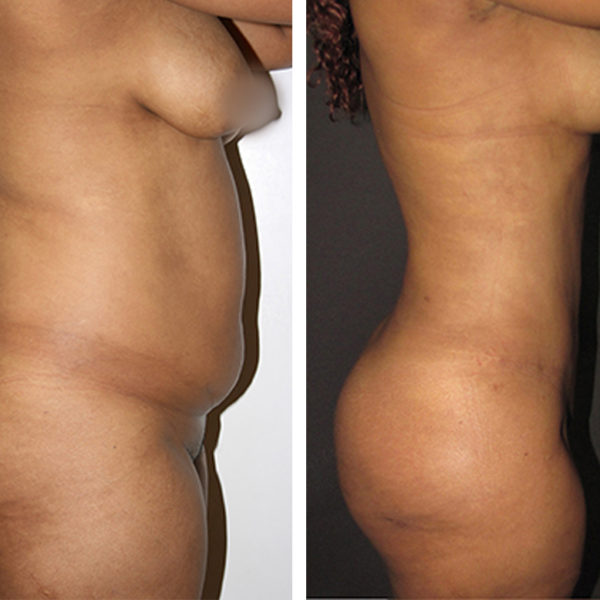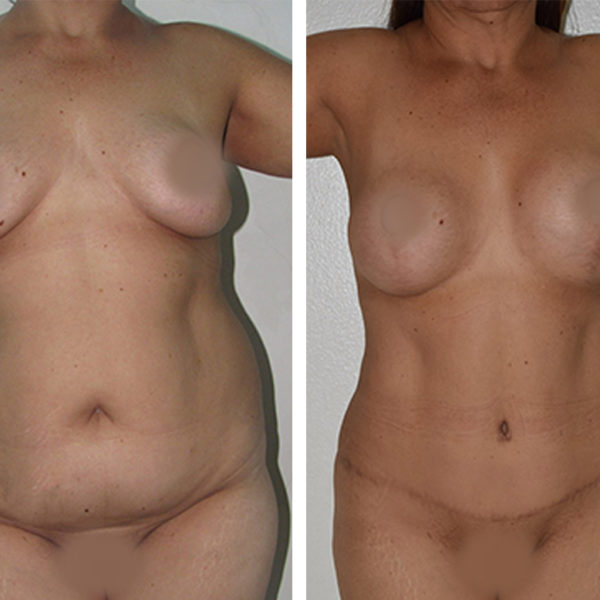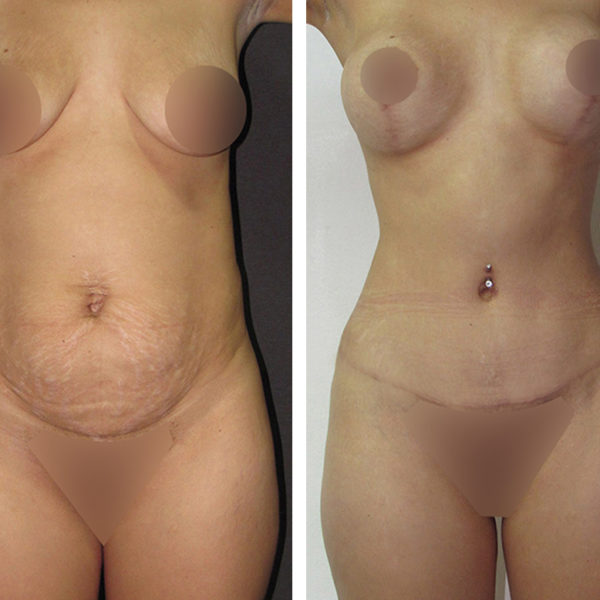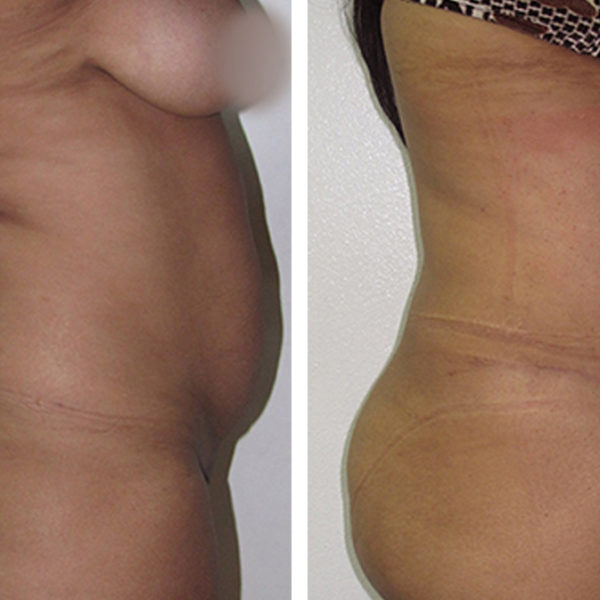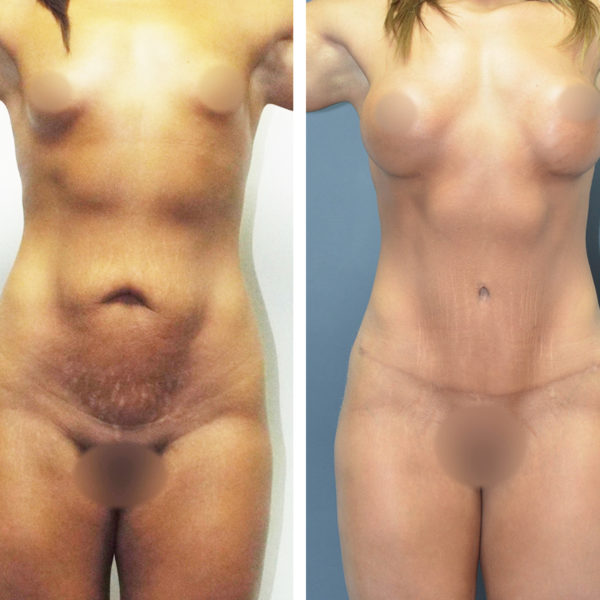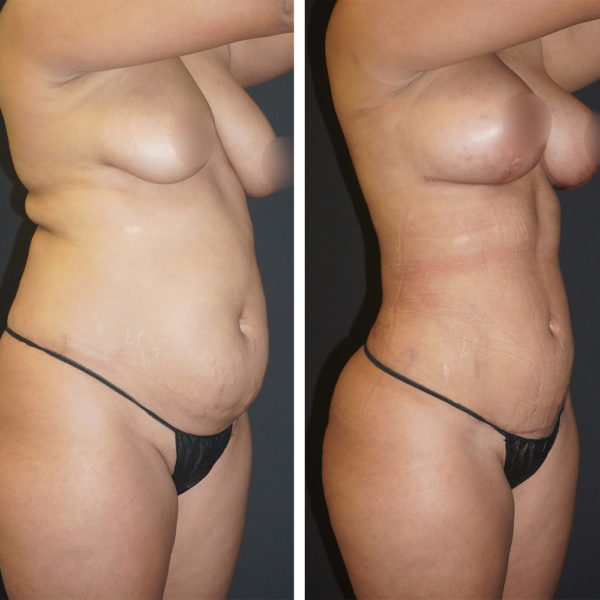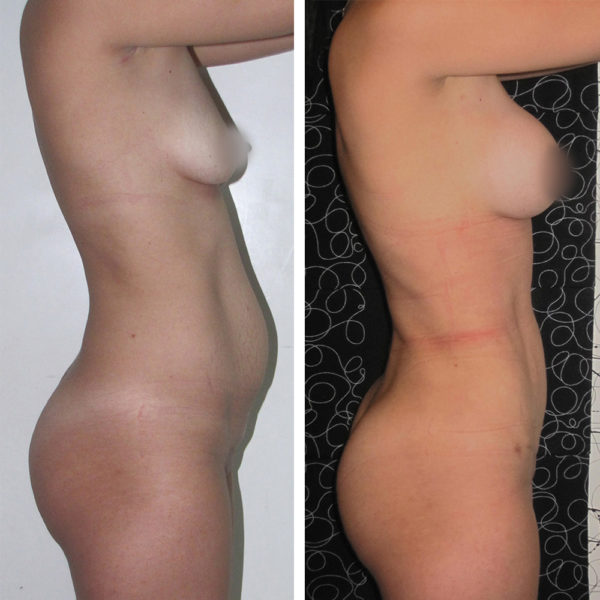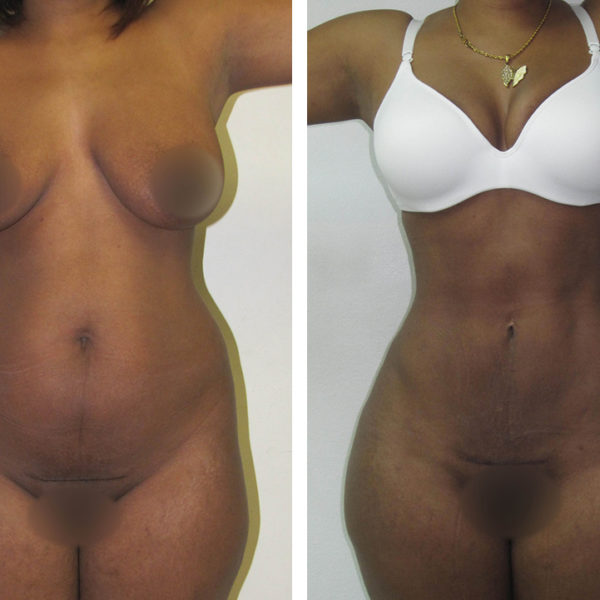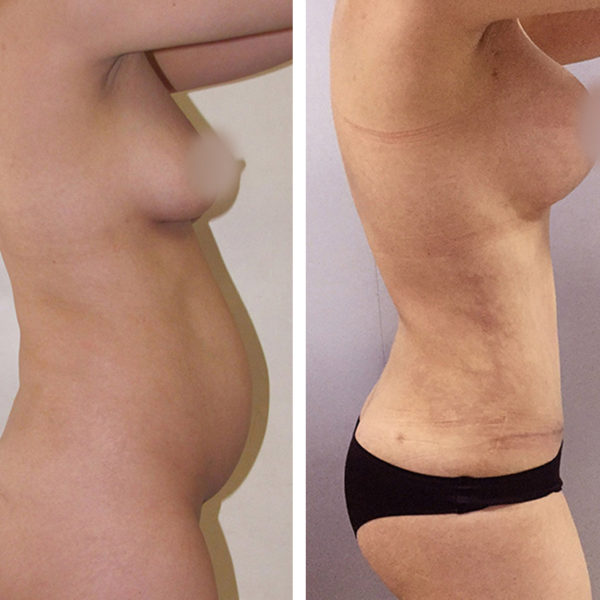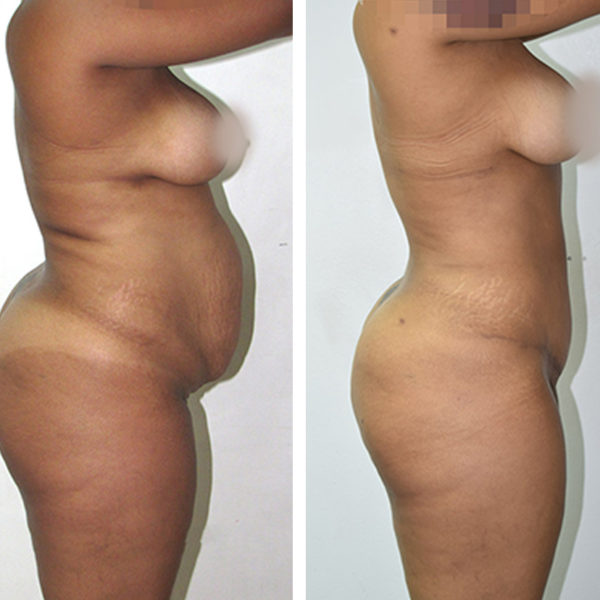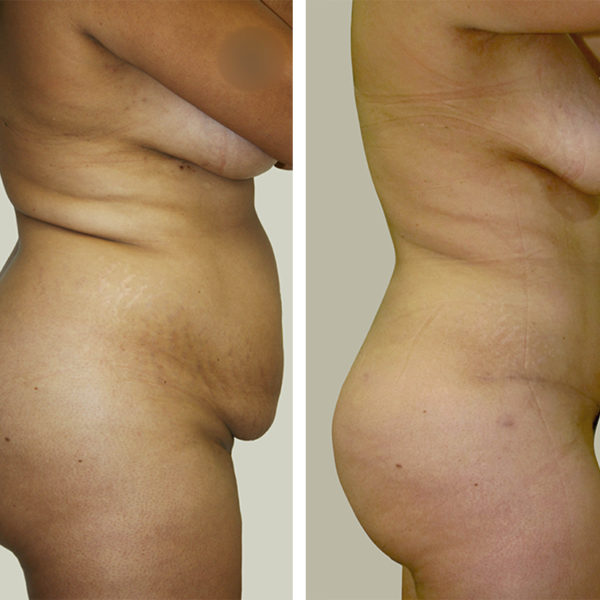Tummy Tuck Overview
A Tummy Tuck is indicated for patients with sagging abdominal skin as a result of extreme weight-loss or post-pregancy. During this procedure, the skin is removed from the pubic area to the navel, the abdominal muscles are reinforced, and the remaining skin is redistributed. The scars are located in the pubic and pelvic region, with the attempt to keep it inside the bathing suit region, but this is not always possible. Request an evaluation today!
Full vs. Mini Tummy Tuck
A full tummy tuck is generally performed to treat the entire abdomen region, both above and below the belly button. This includes a rejoining of the abdominal wall when the muscles have separated, as well as the excision of excess skin. In contrast, a mini tummy tuck is a less extensive variation of the full abdominoplasty. It is typically employed when the loose abdominal muscles and a minimal amount of excess skin are confined to the lower abdomen below the belly button. As a result of the more limited treatment area, a smaller incision is typically utilized for a mini tummy tuck.
Circumferential Tummy Tuck
A circumferential tummy tuck is more extensive than a standard tummy tuck. It’s usually performed on patients who have lost a great deal of weight and now have loose, overhanging skin around their entire body. During this procedure, an incision is made that extends all arond the waistline, by which excess skin and fat is removed, the muscles are tightened, and a new navel is created. The outer thighs and buttocks are often also lifted.
Belly Button
The belly button is attached to a stalk. When the naval is detached from the skin around it, the belly button remains in place. Once any loose, extra skin is removed, remaining abdominal skin is re-draped over the midsection. During this process, a new opening for the belly button is created. Therefore, the naval is the same, but the skin that surrounds it is different.
Anesthesia
During the procedure of Tummy Tuck, anesthesia may be general, regional (spinal), and/or intravenous sedation in combination with local anesthesia in the area being treated.
Surgery Duration
The surgical procedure takes place over an average period of 90-180 minutes. If necessary, this period may be extended. However, the surgical procedure time should not be confused with the amount of time the patient will be in the operating room. That amount of time will also include the administering of anesthesia and postoperative recovery.
Hospitalization Period
Under normal circumstances, the hospitalization period is approximately 1-2 days.
Postoperative Care
Start walking as soon as possible following the surgery. This helps to reduce swelling, lower the chance of developing blood clots and/or pnemonia and avoid constipation. Wear the compression garment 24/7 for 6 weeks post-surgery. Sleep with your head slightly elevated and with pillows under the knees to decrease tension on the incision. Avoid lifting anything over 5 lbs for 6 weeks. Avoid straining the abdominal muscles in any way. Strenuous activities and exercise must be avoided for 2 months following the procedure. Regarding caring for the incision, follow Dr. Lopez Collado’s instructions carefully. Keep the incision clean and inspect daily for signs of infection. Showering is allowed 48 hours after the removal of the drainage tubes. No tub soaking, entering a swimming pool, hot tub, or body of water while drains are in place and for 6-8 weeks following surgery. Avoid exposing scars to the sun for at least 3 months. Always use a strong sunblock if sun exposure is unavoidable.
